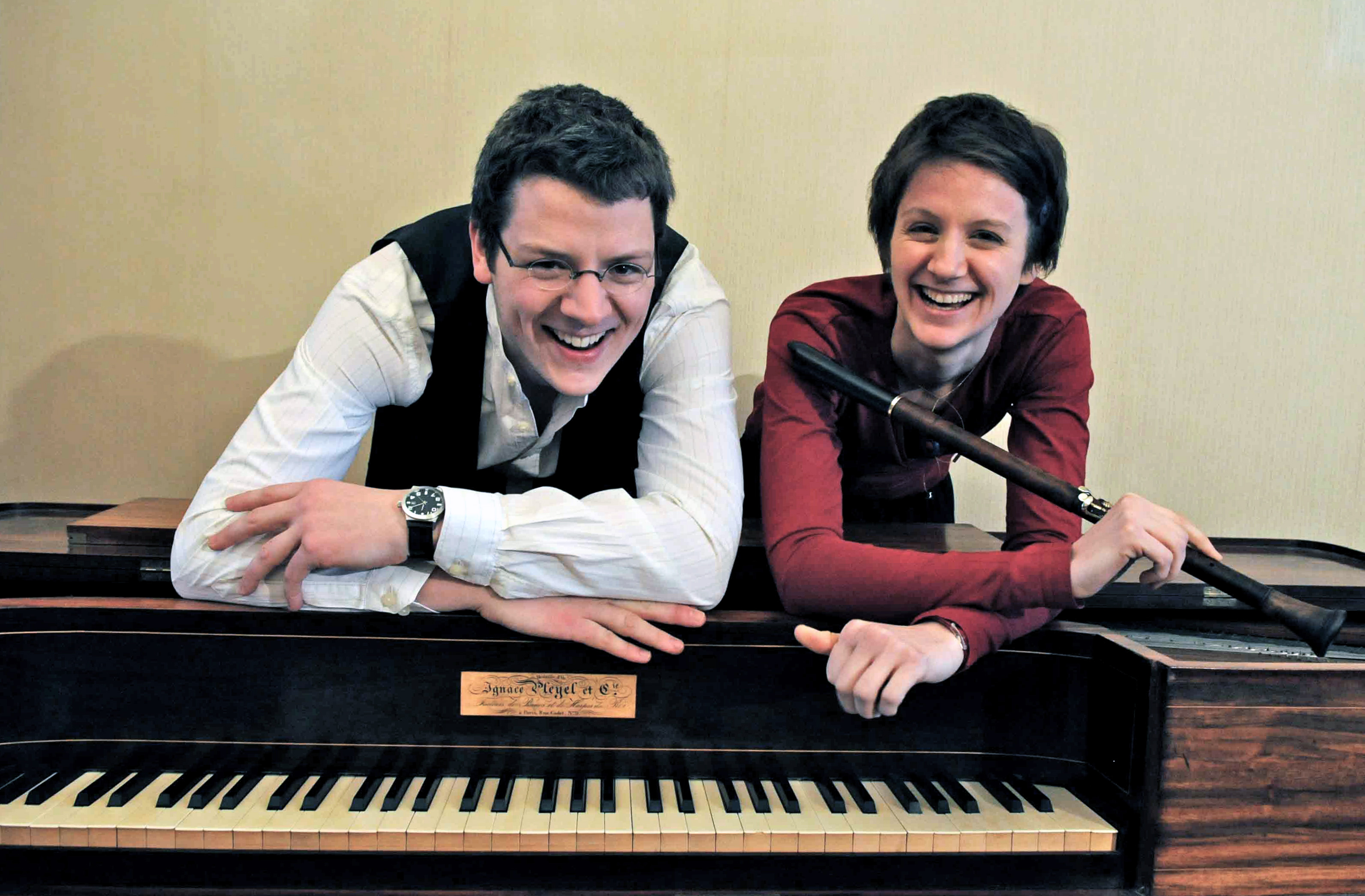What a wonderful and informative evening! More than just a concert of music for recorder and harpsichord, it was a virtuoso display by two masters of their instruments, combined with a most enlightening history lesson. Yet there was nothing pedantic about this evening’s presentation entitled “A Baroque Concert in the Chinese Emperor’s Palace.” From the opening “Air Chinois” to the closing sonata by Arcangelo Corelli, the concert flowed along so gracefully and pleasantly that it almost seemed to be choreographed.
Who knew that “the musician, missionary and priest Teodorico Pedrini (1671-1746) was sent to Beijing in 1701 by the Pope at the behest of the Emperor of China, who had expressed a wish to have a European artist in his service?” (The preceding was a quote from the fine program notes written by members of the Duo Sirocco and Dr. Richard E. Rodda.) Who knew that one of the first serious western studies of non-western music was written by the French Jesuit missionary Joseph-Marie Amiot (1781-1793) who arrived in Beijing in 1751?
The program, described in the notes as an attempt “to reproduce a concert that would have been given at the palace of Emperor Qian Long (1735-1794),” began with “Air Chinois,” Amiot’s transcription of a Chinese melody, plaintively performed on the Xiao (Chinese flute) by Nathalie Houtman. Ms. Houtman, who began playing from the rear of the hall, walked towards the stage down the right aisle. The non-western aspect of the unaccompanied melody was reinforced by an expressive upward-sighing-figure at the end of each phrase. Meanwhile, Mr. Collignon was quietly walking down the left aisle and then up onto the stage. With perfectly rehearsed timing, he sat down at the harpsichord and joined Ms. Houtman for the conclusion of the Amiot.
The “western-music” part of the concert began with the Sonata for Recorder and Harpsichord, Opus 3 No. 6 by the aforementioned Teodorico Pedrini. (We were to hear two more of these sonatas later in the program, all part of the composer’s Opus 3, his only surviving works.) Although these works are of minor musical merit, they were beautifully performed with an impeccable sense of ensemble and great ornamentation. As they were of great historical interest, I am very glad to have heard them in this context. More interesting musically was the next work, a sonata by the French composer and flute virtuoso Michel Blavet (1700-1768).
Although they were brilliantly performed, the works by Pedrini and Blavet paled next to the music of Jean-Philippe Rameau and Archangelo Corelli. For this listener, the musical high points of the concert were the three harpsichord works by Rameau. I marveled at the harmonic vocabulary of “La Dauphine” and was thrilled by the weird chord progression in “L’Enharmonique,” made even more expressive by Mr. Collignon’s subtle use of rubato. The repeated notes imitating the sound of chickens in “La Poule” were made even more interesting by the way Mr. Collignon varied the articulation. This was great technical skill in the service of great music.
It should be noted that none of the five works which appeared on the printed program as “Sonata for Recorder and Harpsichord” were originally written for these instruments. As stated in the program notes, the three Pedrine sonatas were written for violin and bassoon continuo (bass instrument and harpsichord improvising the stipulated chords), the Blavet for transverse flute and basso continuo, the Corelli for violin and basso continuo. In the baroque, the bass instrument which doubled the lowest note of the harpsichord was often omitted, and other treble instruments could perform the parts originally written for violin or flute. The virtuosic high point of the evening took place during Ms. Houtman’s performance of the Corelli violin sonata, the concert’s final work. What is idiomatic on a violin would seem to be almost impossible on the recorder. After I heard the fast arpeggio “string crossings” in the first movement, in my notes I wrote “Wow!” After the second movement I wrote “faster?”, and after the third I marveled “even faster!!” What fleet fingers, what quick tonguing, what thrilling playing!
After a rousing round of applause, Mr. Collignon ambled onto the stage strumming a tiny Renaissance guitar. Mr. Houtman followed, and together they brought the concert to a delightful conclusion with a rollicking performance of an arrangement of the Tambourin from Rameau’s “Pièces de clavecin, 1731.”

